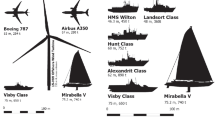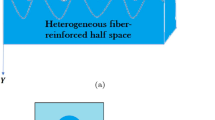Abstract
The problem of determining the stress-intensity factors near cracks interacting with fibers is solved for the first time using data from optical-polarization measurements. Simplified models of composites are investigated — plates reinforced with single short fibers with cracks assigned on one of the ends of the fibers and tensioned in the direction of the fibers. The plates (dies) were fabricated from a photosensitive material, and the fibers were modeled by bars of steel, glass, and polymer. The stress-intensity factors were determined from Eq. (5) using data derived from optical-polarization measurements at several points by the nonlinear method of least squares. We investigated the influence exerted by several physical and geometric parameters on the stress-intensity factors. It was established that the stress-intensity factor K1 near the end of a crack interacting with a fiber is higher than the factor K0 1 near a crack of corresponding length in the unreinforced plate. The ratio K1/K0 1 depends on the mechanical properties of the fiber and die materials and the geometric dimensions of the crack and fiber. Despite the fact that these results were obtained using simplified models of composites, they are of interest for evaluation of the failure and serviceability of real composites.
Similar content being viewed by others
References
A. P. S. Selvadurai, “Cracks at the extremities of cylindrical fiber inclusions,” in: IUTAM Symposium “Inelastic Deformation of Composite Materials,” Troy, New York (1990), pp. 147–171.
J. M. Etheridge and J. W. Dally, “A critical review of methods for determining stress-intensity factors from isochromatic fringes,” Exper. Mech.,17, No. 7, 248–254 (1977).
R. J. Sanford and J. M. Dally, “A general method for determining mixed-mode stress-intensity factors from isochromatic fringe patterns,” Eng. Fract. Mech.,11, No. 4, 621–639 (1979).
R. J. Sanford, “Application of the least-squares methods to photoelastic analysis,” Exper. Mech.,20, No. 6, 192–197 (1980).
Additional information
Scientific-Research Institute of Mechanics, M. V. Lomonosov Moscow State University, Moscow, Russia. Translated from Mekhanika Kompozitnykh Materialov, Vol. 32, No. 4, pp. 493–501.
Rights and permissions
About this article
Cite this article
Netrebko, V.P. Model studies of stress-intensity factors near cracks interacting with fibers. Mech Compos Mater 32, 340–345 (1996). https://doi.org/10.1007/BF02254746
Received:
Issue Date:
DOI: https://doi.org/10.1007/BF02254746




